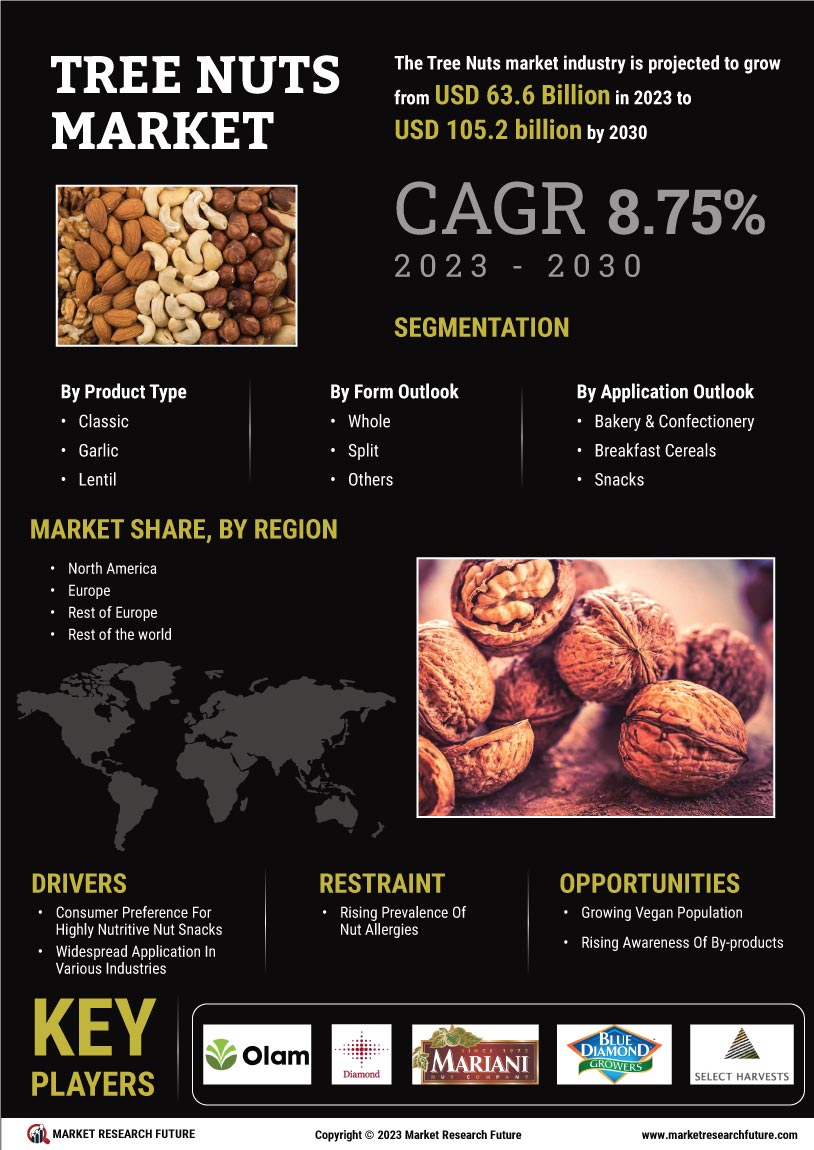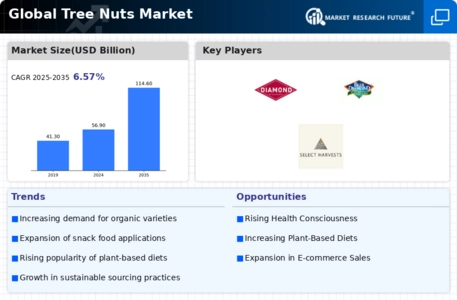Health Consciousness
The increasing awareness of health and wellness among consumers appears to be a primary driver for The Global Tree Nuts Industry. As individuals seek healthier dietary options, tree nuts are often recognized for their nutritional benefits, including high levels of protein, fiber, and healthy fats. According to recent data, the consumption of tree nuts has surged, with almonds and walnuts leading the market due to their perceived health benefits. This trend is likely to continue, as more consumers incorporate tree nuts into their diets as snacks or as ingredients in various dishes. The health-conscious demographic, particularly millennials and Gen Z, seems to be driving demand, thereby influencing product offerings and marketing strategies within the industry.
Global Trade Dynamics
The dynamics of international trade play a pivotal role in shaping The Global Tree Nuts Industry. Trade agreements and tariffs can significantly influence the availability and pricing of tree nuts across different regions. For instance, countries that are major producers, such as the United States and Australia, benefit from favorable trade conditions, allowing them to export their products more efficiently. Conversely, regions facing trade barriers may experience supply constraints, affecting market prices and availability. The ongoing evolution of trade policies and agreements is likely to impact the competitive landscape, as companies navigate these complexities to optimize their supply chains and reach global markets.
Sustainable Practices
Sustainability has emerged as a crucial factor influencing consumer choices, thereby impacting The Global Tree Nuts Industry. As environmental concerns grow, consumers are increasingly favoring products that are sourced sustainably. This shift has prompted many producers to adopt eco-friendly practices, such as organic farming and responsible sourcing. Data indicates that the market for organic tree nuts is expanding, with consumers willing to pay a premium for sustainably sourced products. This trend not only aligns with consumer values but also enhances brand loyalty. Companies that prioritize sustainability in their operations are likely to gain a competitive edge, as they appeal to a growing segment of environmentally conscious consumers.
Rising Disposable Incomes
The increase in disposable incomes in various regions is contributing to the growth of The Global Tree Nuts Industry. As consumers have more financial flexibility, they are more inclined to spend on premium food products, including tree nuts. This trend is particularly evident in emerging markets, where a burgeoning middle class is driving demand for healthier snack options. Market data indicates that regions with rising disposable incomes are witnessing a surge in tree nut consumption, as consumers seek quality and variety. This economic shift suggests that the market may continue to expand, as more individuals incorporate tree nuts into their diets as a source of nutrition and indulgence.
Innovative Product Offerings
Innovation in product development is a significant driver for The Global Tree Nuts Industry. Manufacturers are increasingly introducing new flavors, blends, and formats to cater to diverse consumer preferences. For instance, the rise of flavored and coated nuts has attracted a broader audience, while the introduction of nut-based snacks and spreads has expanded market reach. Recent market data suggests that the demand for value-added products, such as nut butters and snack mixes, is on the rise. This trend indicates that consumers are not only looking for traditional tree nuts but are also interested in innovative applications that enhance convenience and taste. As a result, companies that invest in research and development are likely to thrive in this competitive landscape.


















Leave a Comment